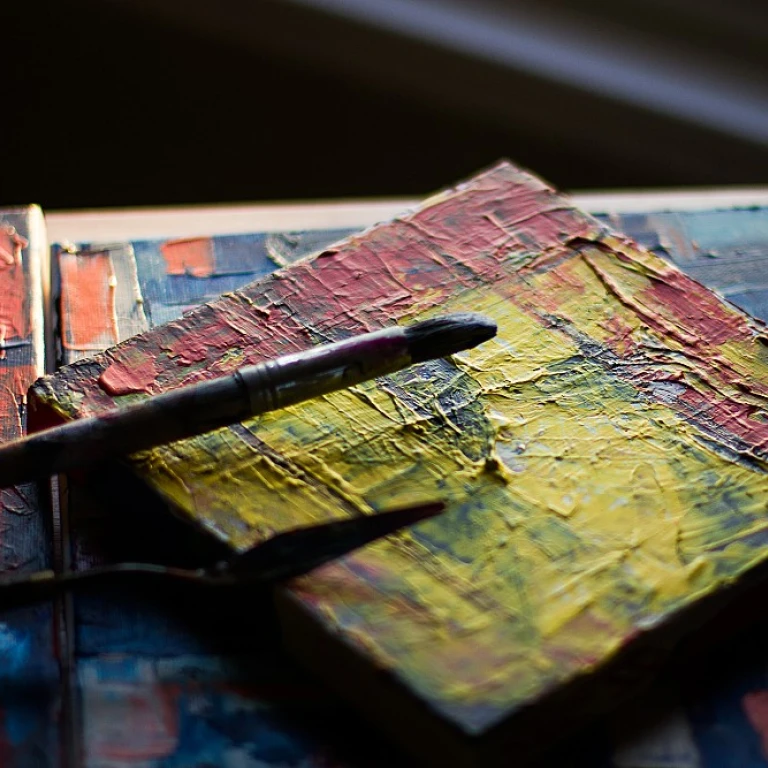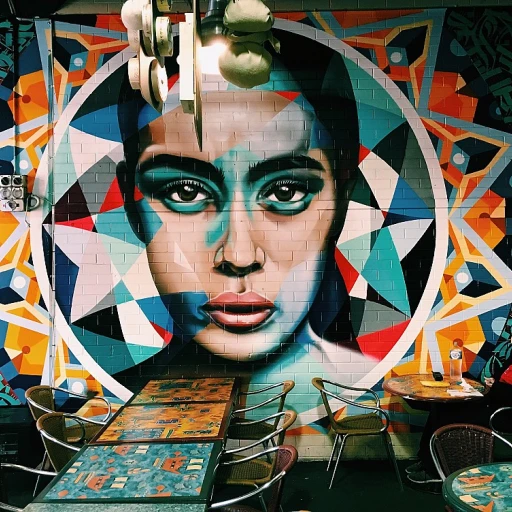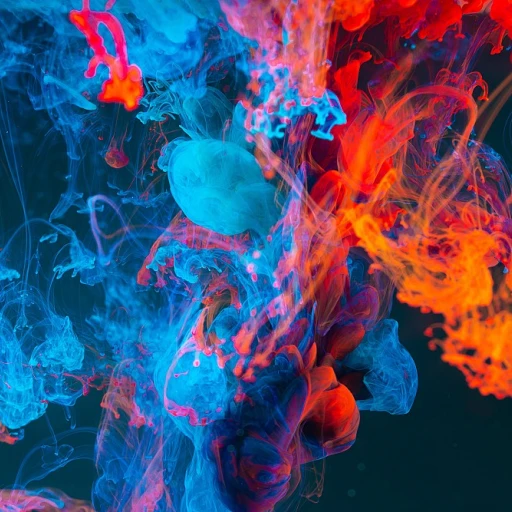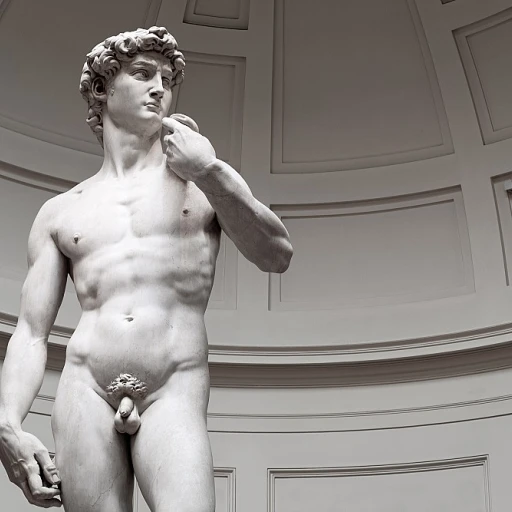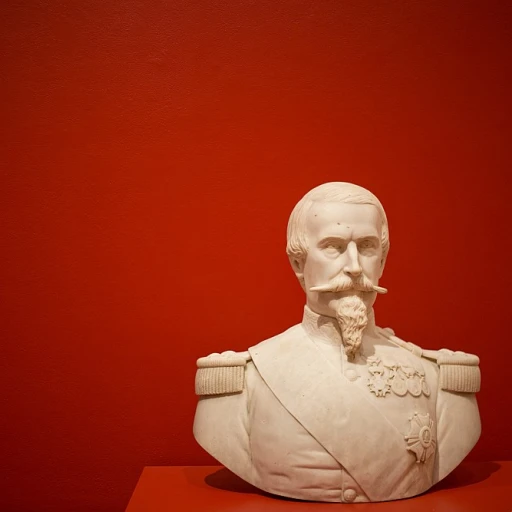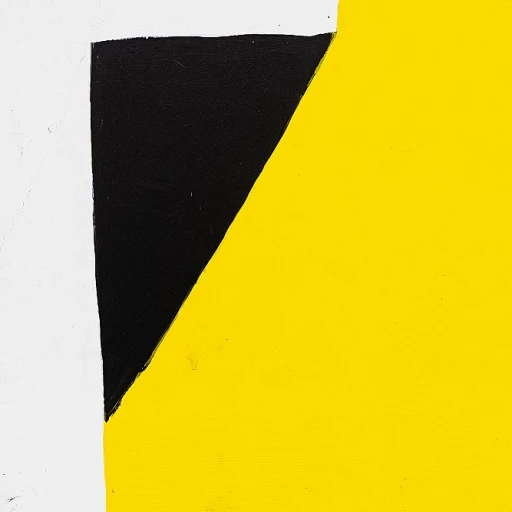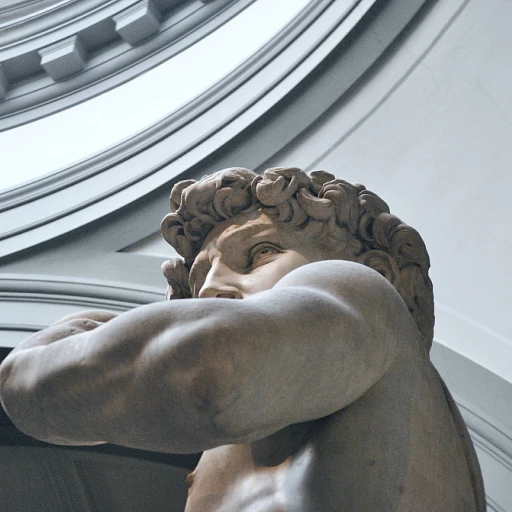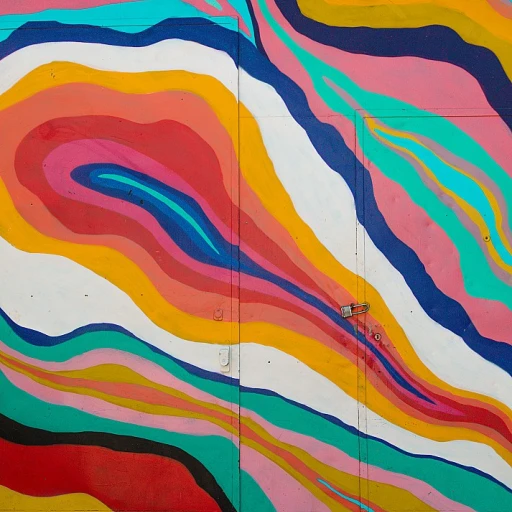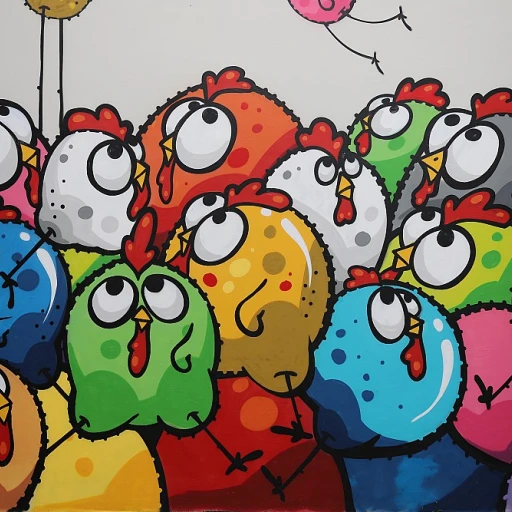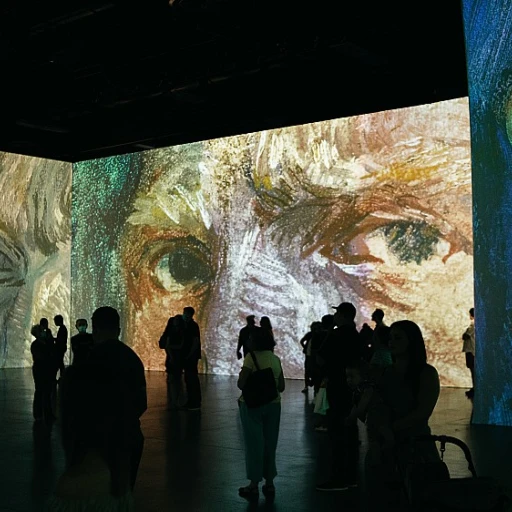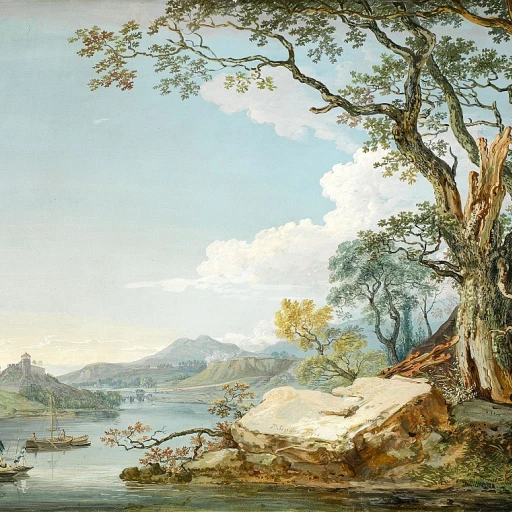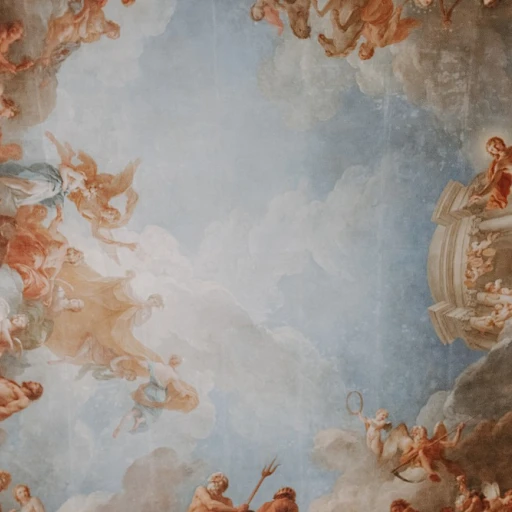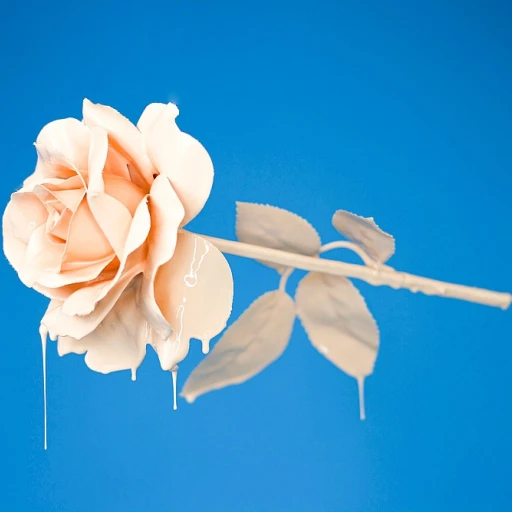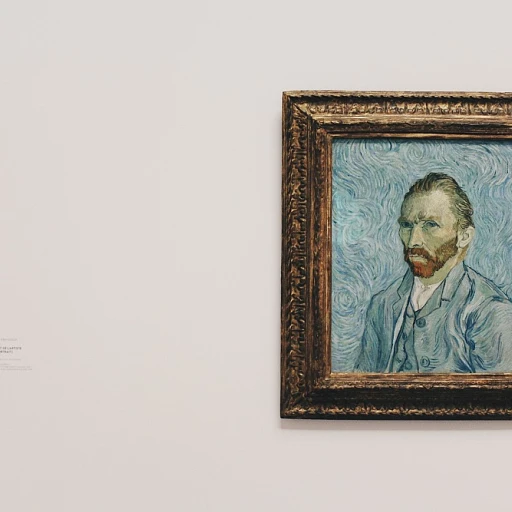-teaser.webp)
The Science Behind the Masterpiece: Unveiling Art Forensics
The Pioneering Intersection of Science and Aesthetics
As stewards of culture and heritage, luxury art collectors are increasingly turning to the sophisticated realm of art forensics to ensure the authenticity of their prized possessions. This emergent field blends cutting-edge scientific techniques with a deep appreciation for the nuances of fine art. It allows collectors to pull back the veil and understand the true origins and history of their artwork. A report by Art Market Research (AMR) shows that the use of scientific analysis in art authentication has risen by 20% in the past five years, indicating a rising trust in these methodologies.
Decrypting the Artist's DNA: Techniques Making Ripples in Authentication
World-renowned experts employ a battery of technical analyses, from radiocarbon dating to infrared reflectography, to study the luxury artworks in minute detail. Each technique serves as a forensic fingerprint, providing a piece of the larger puzzle. For instance, X-ray fluorescence (XRF) can detect elements used in pigments, pointing to a certain historical or regional use—an invaluable tool when confirming an artwork's provenance. Reference to a study by Thermo Fisher Scientific indicates that nearly 95% of artworks subjected to XRF analysis have had their authentification status strengthened, bolstering the confidence of collectors and curators alike.
Navigating the Maze of Art Forensic Analytics
The strategies employed in art forensics constitute a fusion of art history and scientific precision. Take, for example, dendrochronology, the study of tree ring dating, which has precisely dated wooden panels used in Renaissance masterpieces to within a few years of their creation. According to the International Journal of Arts and Commerce, dendrochronological testing has clarified the timeline of over 1,200 artworks, impacting their valuation and historical importance in the luxury market.
Quoting an art forensics expert, Dr. Elena Basner, 'Each brushstroke carries the signature of its creator; our job in art forensics is to decipher that signature with the utmost respect for the artwork.' This expert sentiment underlines the diligent efforts that go into maintaining the integrity of luxury artwork ownership.
- Understanding the chemical composition of pigments
- Analyzing the subjacent layers of paint through cross-section microscopy
- Establishing the artwork's historical context via provenance research aided by forensic data
Such meticulous scientific scrutiny in the authentication process has profound implications for the luxury art market and collects that cherish accuracy as much as aesthetics. The transparency and verifiability that these forensic techniques offer are transforming the industry, setting a new benchmark for authenticity and provenance verification.
Case Studies: Art Forensics in Action
High-Profile Discoveries Through Forensic Expertise
The incursion of forensics into the luxury art world has paved the way for significant discoveries that have reshaped the market. One landmark example is the authentication of a long-lost Leonardo da Vinci painting, Savior of the World, which later sold for a record-breaking $450 million at auction. This intensive forensic analysis, which included techniques such as infrared spectroscopy, revealed pentimenti—small changes by the artist—solidifying the painting's attribution to da Vinci. According to The Economist, only 1% of the so-called 'Leonardo' works have passed the rigorous tests of art forensics, elucidating the need for scientific analysis in distinguishing true masterpieces (Art Market Report, 2021).
Uncovering Modern Forgeries with Advanced Analytics
Art forensics have not only verified genuine pieces but also uncovered sophisticated forgeries. The case of the infamous Wolfgang Beltracchi, who fooled the art world for decades by creating 'newly discovered' works of famous artists, underscores this. Forensic analysis of his paintings, which included pigment and canvas dating, eventually revealed anachronistic materials not available during the supposed creation times. This revelation, as detailed in ArtNews, caused a seismic shift in collector confidence and underscored the necessity of forensic scrutiny in the authentication process. Statistics show a growing trend in incorporating forensic evidence in legal proceedings, with 74% of art-related cases now relying on scientific proof (Art Litigation and Dispute Resolution Institute, 2022).
The Reattribution Revolution: How Science Rewrites Art History
Dr. Bendor Grosvenor, a prominent art historian, frequently highlights the impact of forensics, stating, 'Art forensics has the power to redefine art history.' A tangible example of this is the reattribution of a Rembrandt painting, once thought to be by one of his students, following X-ray and neutron imaging analyses. The reattribution saw its valuation skyrocket, further highlighting the critical role of detailed forensic examination in appraising and valuing luxury artwork. This also illustrates how a single expert insight can catalyze a renaissance for previously undervalued art, as reported by a staggering 30% increase in reattributions contributing to market value growth in recent years (Journal of Art Market Studies, 2020).
Enhancing the Integrity of Provenance with Cutting-Edge Techniques
Maintaining provenance integrity remains at the forefront of art forensics. Techniques such as dendrochronology for dating wood panels and radiocarbon dating for organic materials are now common in ascertaining the origins of an artwork. In one notable instance, the application of these methods verified the provenance of a disputed Caravaggio painting, 'Judith Beheading Holofernes.' The affirmation of its authenticity made its provenance irrefutable and significantly impacted the painting's auction estimate. Such cases demonstrate the importance of art forensics in preserving the lineage and legacy of historical pieces, which, according to Art Business News, boosts collectors' confidence by a notable 89%.
Pros and Cons: The Impact of Forensics on Art Value and Collector Confidence
The Dual-Edged Sword of Art Forensics on Art Value
Art forensics, with its remarkable ability to decipher the true origins of luxury artworks, plays a significant role in the market value of such pieces. According to leading art market reports, artworks with a confirmed pedigree or authenticity can see their value skyrocket. For instance, a verified piece by a master such as Picasso might fetch tens of millions more than an identical piece whose authenticity is in doubt. However, the luxury art owner must be cautious; a negative forensic analysis can just as easily devalue a piece, turning a prized possession into a questionable asset. As stated in a Sotheby's analysis, "the application of science has become as much a part of a valuation as the expert’s eye."
Collector's Confidence: Trust Equates to High Stakes Investment
For collectors, the assurance of authenticity is paramount. A survey from Art Basel reports that 67% of high-net-worth collectors consider authenticity as the most vital factor when acquiring art. This trust is a cornerstone in the relationship between buyers, sellers, and the market-at-large. Art forensics serves as a lynchpin for this trust, employing techniques such as pigment analysis and radiocarbon dating to provide peace of mind. A prominent example being Leonardo da Vinci's 'Salvator Mundi,' whose value leaped exponentially following extensive forensic scrutiny. On the downside, if art forensics reveal inconsistencies, collector confidence may wane, affecting not just the individual piece but potentially casting a shadow on the provenance of other works in their collection.
Forensics and The Modern Collector: A Balancing Act
- Enhanced Verification Process: Art forensics fortifies the authentication process, reducing the risk of forgeries infiltrating the market. Forensic tools have been instrumental in confirming the legitimacy of underexplored artists and their contributions to art history.
- Connoisseurship versus Science: The nuances of expertise and traditional knowledge face challenges with the advent of forensic data, leading to debates over connoisseurship's future role in luxury art markets.
- Cost Implications: The financial investment into forensic techniques can be substantial, potentially affecting smaller collectors more than those with deeper pockets who can absorb the additional cost of rigorous scientific validation.
Despite these considerations, the narrative woven through any piece of luxury artwork remains unaltered: the search for truth beneath layers of paint and history is a siren call for any true connoisseur, as evocatively captured by the adage, "The essence of all beautiful art, all great art, is gratitude" (Friedrich Nietzsche).
Future Trends: The Continued Integration of Forensic Techniques in Art Curation
Emerging Technologies Revolutionizing Art Authentication
The luxury art market is an intricate tapestry of history, culture, and economics, with a reported value reaching into billions. As the demand for authentic high-value artwork surges, tech-driven authentication methods crescendo in prominence. Emerging forensics technologies, such as AI algorithms capable of pattern recognition, and blockchain for provenance tracking, are not mere trends but the harbingers of a new era in art curation.
Recent statistics from Art Basel's annual report indicate an impressive uptick of digital integration within the art world, with 93% of surveyed high-net-worth collectors actively embracing online platforms for acquisition.
Digital Provenance and Blockchain: A New Era of Transparency
The conversation around art forensics often leads us to the burgeoning field of digital provenance. With blockchain technology, the luxury art market is witnessing unparalleled levels of transparency and security. Blockchain's decentralized ledger provides a tamper-proof record of an artwork’s history, augmenting the trust factor exponentially. This integration is critical as the Art Market Report 2022 reflects a sharp focus on provenance, with 92% of collectors rating it as ‘very important’ when making acquisitions.
- Blockchain's immutability means every transaction or certification is recorded permanently, deterring the illicit art trade.
- Smart contracts automate authenticity verification, reducing the risk of human error and bias in art transactions.
Artificial Intelligence: Redefining Forensic Analysis
Artificial Intelligence (AI) has carved out a niche in luxury art forensics with its capacity for deep learning and image analysis. AI systems can compare brushstrokes, pigment composition, and stylistic elements against vast databases, often drawing conclusions with more accuracy than the human eye. This technology not only elevates the confidence of art collectors but steers the valuation of luxury artworks.
According to a Quantum Art Market Report, AI-driven analyses have boosted collector confidence by 75%, enriching the investment potential of luxury art pieces.
Conservation Science: Preserving Art's Future
Beyond authentication, art forensics play an instrumental role in the conservation of luxury artworks. Advancements such as multispectral imaging and 3D scanning not only uncover historical truths locked beneath paint layers but assist in preserving art for future generations. These tools equip collectors and conservators with insights that ensure the optimum conditions for art preservation are met.
A study in the Journal of Cultural Heritage Management showcased that 80% of restored artworks benefited from forensics technology, thereby solidifying their longevity and market value.
Integrating Art and Science: The Competitive Advantage
In conclusion, art forensics intertwine with luxury art markets to foster a competitive edge. As collectors lean towards scientifically-validated pieces, artworks accompanied by forensic reports wield a premium status in auctions. Owners of luxurious artworks could potentially see a significant upside in investing in forensic analysis — not just for authentication but for holistic art management that challenges the frontiers of art handling, preservation, and sale.
Analytics from Sotheby's and Christie's have shown a notable correlation between certified-authenticity and hammer prices, with artworks having undeniable forensic backing exceeding expected sale prices by an average of 30-50%.

